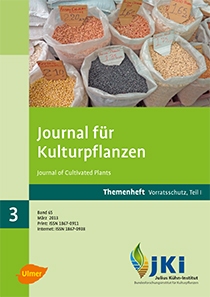Studies to control the Indianmeal moth <em>Plodia interpunctella</em> and the drugstore beetle <em>Stegobium paniceum</em> with subzero temperatures of –10°C, –14°C and –18°C
DOI:
https://doi.org/10.5073/JfK.2013.03.05Keywords:
Cold disinfestation, freezing, control, Indianmeal moth, Plodia interpunctella, drugstore beetle, Stegobium paniceumAbstract
The Indianmeal moth Plodia interpunctella and the drugstore beetle Stegobium paniceum are two of the most common insects in dried fruits, nuts, grain products, herb teas or spices. The stages of both species were held at –10, –14 and –18°C for 5 minutes to 480 minutes and the survival subsequently noted. The following times and temperatures were required to control all stages: P. interpunctella; 503 min at –10°C (extrapolated for the most tolerant egg stage), 283 min at –14°C and 70 min at –18°C. All four stages of S. paniceum were more tolerant. At –10°C, about 18%, 34%, 10% and 94% of eggs, larvae, pupae and adults survived 480 minutes of exposure, respectively. –14°C were fully lethal towards all larvae, pupae and adults within 240 minutes. About 90% of the eggs died within this exposure time at –14°C. At –18°C, 60 minutes served to kill all larvae, pupae and adults. At this temperature, about 98% of the eggs did not survive 60 minutes treatment, only 1% of the eggs survived after 120 minutes of exposure. Regression functions were determined for the moths for the determination of mortalities and lethal exposure periods for the temperature range between –10°C and –18°C.
Downloads
Published
Issue
Section
License
The content of the journal is licensed under the Creative Commons Attribution 4.0 License. Any user is free to share and adapt (remix, transform, build upon) the content as long as the original publication is attributed (authors, title, year, journal, issue, pages).
The copyright of the published work remains with the authors. The authors grant the Journal of Cultivated Plants, the Julius Kühn-Institut and the OpenAgrar repository the non-exclusive right to distribute and exploit the work.







